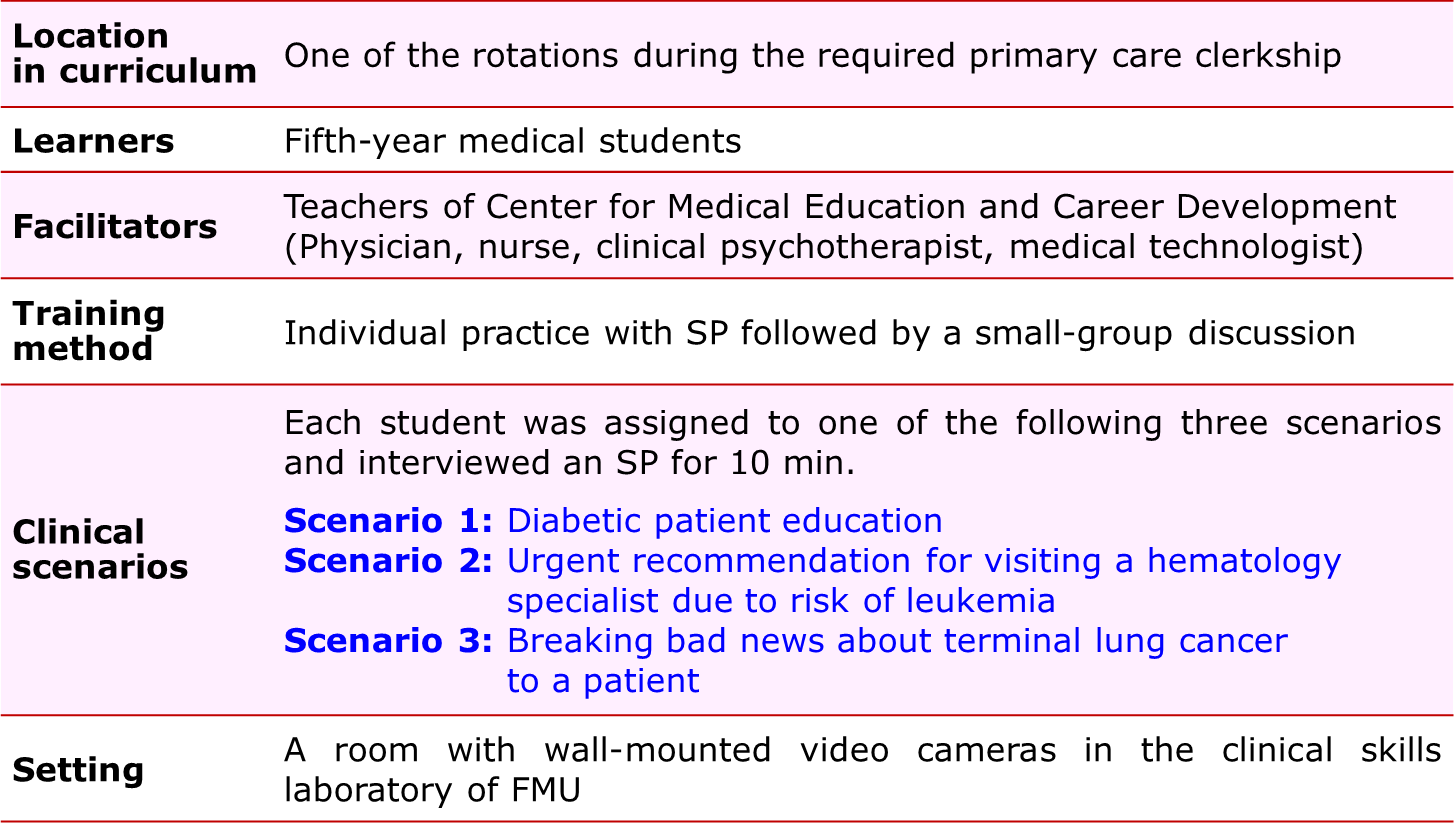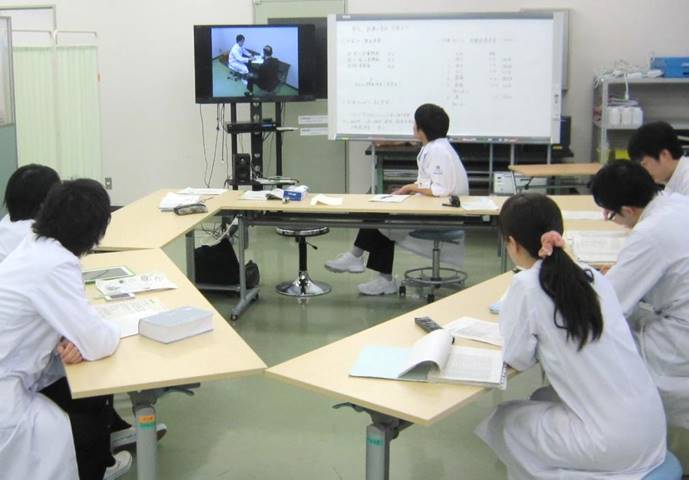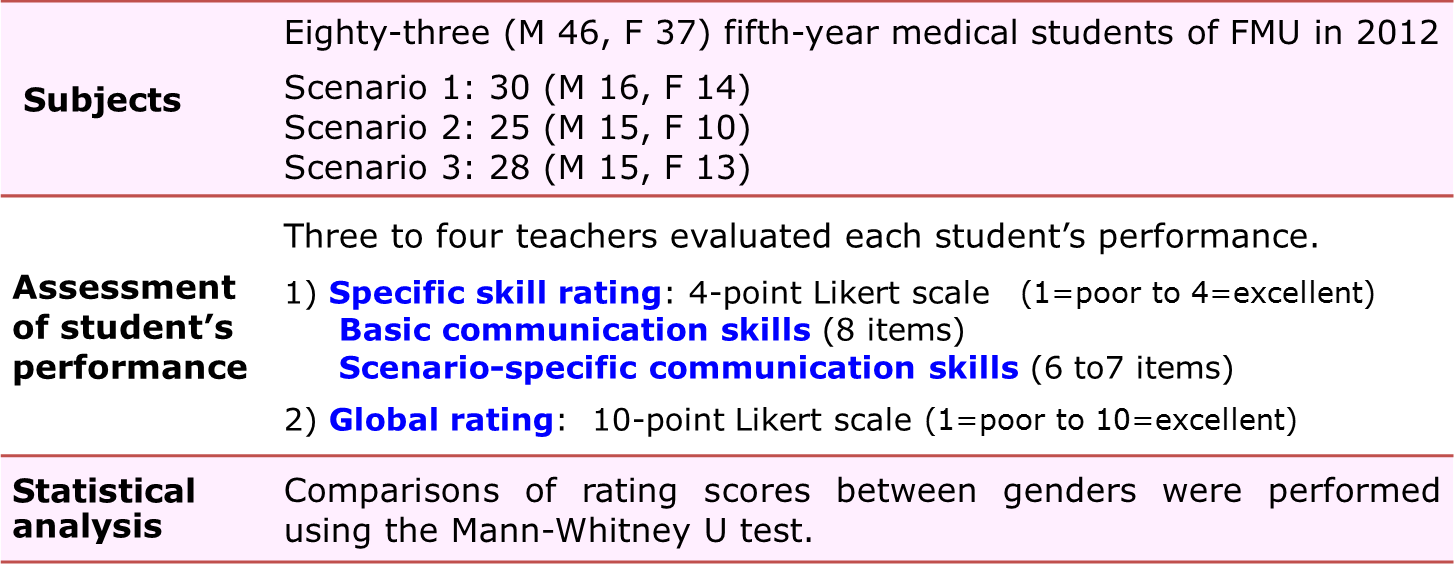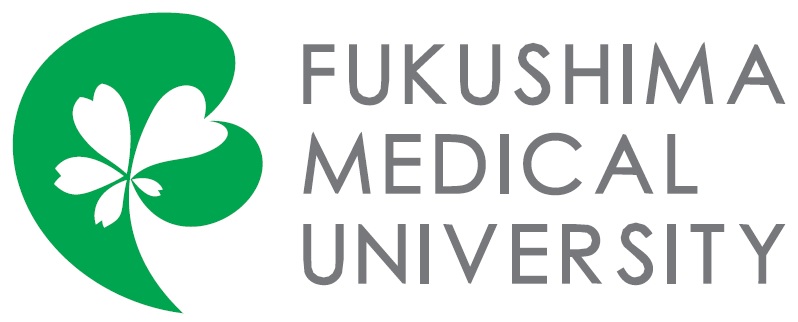


Theme
2JJ Communication
INSTITUTION
1. Center for Medical Education and Career Development, Fukushima Medical University, Japan
2. Department of Hygiene and Preventive Medicine, Fukushima Medical University, Japan

Physicians’ communication style could be affected by their characteristics: gender, personality, social background, clinical experience among others. Of these, gender differences were notably well documented and nonverbal sensitivity was higher in women than men[1]. Female physicians more often discussed psychosocial issues[2]. These reports suggest that female physicians or female medical students show the better communication skills. However, few studies of gender effects on communication in healthcare have been carried out in Japan.
To examine gender effects on communication traits, we evaluated the performance of Japanese medical students during introductory medical interview training with simulated patients (SPs).
1. Outline of the medical interview training in Fukushima Medical University (FMU)



2. Study methods

There were significant gender differences in communication skills among medical students during the introductory medical interview training with female students showing better communication skills.
Our study results suggest different readiness and traits by gender for communication skills learning. We need to design and facilitate communication training taking account of gender difference for students’ effective learning.
Medical students’ communication performance scores
Scenario 1 Diabetic patient education
Female students showed significantly higher scores in greeting and giving adequate advice for life-style modification.
Scenario 2 Recommendation for visiting hematology
Female students showed significantly higher scores in giving empathic verbal response and understanding the patient’s social background.
Scenario 3 Breaking bad news about cancer to a patient
Female students showed significantly higher scores in nodding and back-channeling, behaving empathically, avoiding the use of medical jargon, holding a smooth interview, and also in overall communication performance.
If you want to see detailed data, please click 'more detail'.
This study was supported by JSPS KAKENHI Grant Number 24790506. The authors gratefully thank the students, SPs and teachers who dedicated their time to participating in this study. The authors have no financial conflicts of interest to disclose concerning the presentation. A part of this presentation was presented as a poster at the Japanese Association of Health Communication 5th annual congress in 2013.
1. Hall, J.A., Nonverbal sex differences. 1984, Baltimore and London: Johons Hopkins University Press.
2. Roter, D.L., J.A. Hall, and Y. Aoki, Physician gender effects in medical communication: a meta-analytic review. Jama, 2002. 288(6): p. 756-64.

 Send Email
Send Email